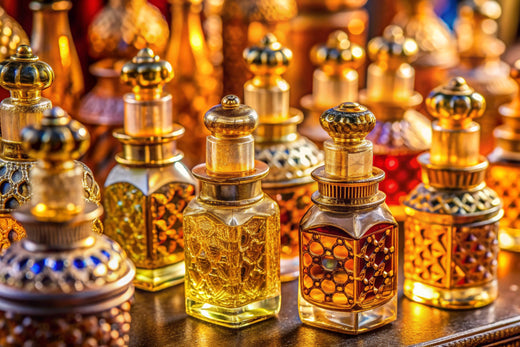Indian perfume has a rich and storied history that dates back thousands of years. From the temples of ancient India to the royal courts of the Mughal Empire, these fragrances have been an integral part of Indian culture and traditions. The art of perfume-making in India is not just about creating scents; it’s a craft deeply embedded in spirituality, luxury, and nature. In this blog, we'll explore the deep roots of Indian fragrances, their unique ingredients, and their enduring influence on the global fragrance industry.
The Origins of Indian Perfumes
The history of natural perfume from India begins in ancient civilizations, where the art of creating fragrances was considered sacred. In ancient India, perfumes were made using natural ingredients like flowers, herbs, and spices. These were often used in religious ceremonies and as offerings to deities. The use of perfume was also prevalent among the elite, symbolizing status and luxury. Indian-originated perfume, especially in the form of attars, has been celebrated for its purity and ability to capture nature's essence.

Popular Indian Fragrance Ingredients
The uniqueness of Indian perfumes lies in their ingredients. Sandalwood, jasmine, and rose are some of the most popular and commonly used ingredients in Indian fragrances. Sandalwood, known for its rich, woody scent, has been a staple in Indian-originated perfumery for centuries. With its sweet and intoxicating aroma, Jasmine is another favorite, often associated with love and romance. Rose, known as the "queen of flowers," adds a soft, floral note that is both luxurious and timeless. These ingredients not only define the essence of Indian scents but also connect it to nature profoundly.
Regional Variations in Indian-originated Perfume Traditions
India’s vast and diverse landscape has given rise to various regional perfume traditions, each with its own unique characteristics. In the northern regions, attars made from roses and saffron are highly prized. The southern regions, particularly Mysore, are famous for sandalwood-based perfumes. The eastern parts of India are known for using spices and herbs in perfume-making, while the western regions boast a rich tradition of using exotic flowers like mogra. These regional variations highlight the rich tapestry of traditional Indian perfume-making and the cultural significance of these scents.
Influence on Global Perfumery
Natural perfume from India has not only thrived within its borders but has also had a significant influence on global perfumery. Natural ingredients like sandalwood and jasmine have inspired many global fragrance houses. The concept of attars, concentrated perfumes without alcohol, has also gained popularity worldwide. Indian scents’s emphasis on using natural and pure ingredients resonates with today’s growing trend toward sustainability and eco-friendly products. The global appeal of Indian fragrances is a testament to its timelessness and versatility.


